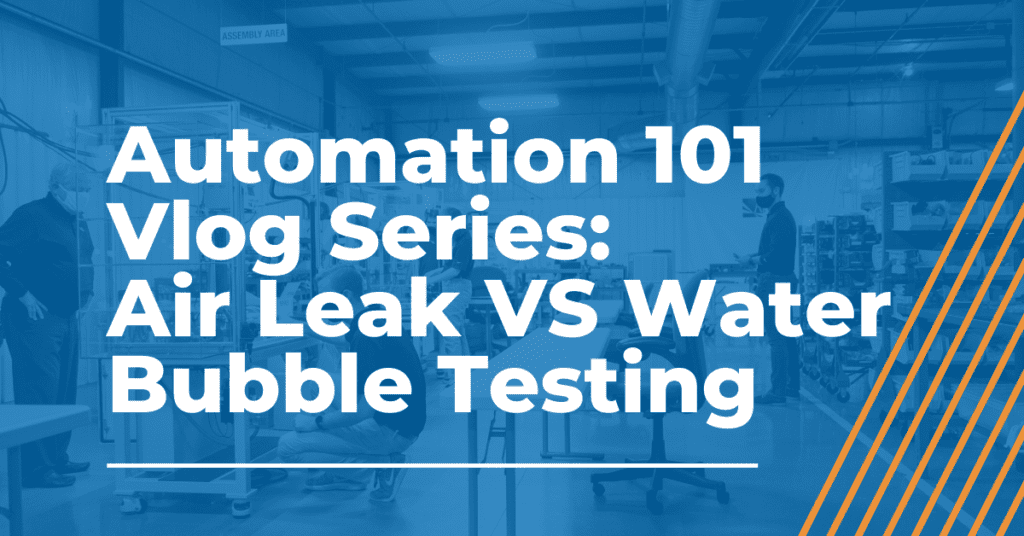
Automation 101: Air Leak VS Water Bubble Testing
Learn how to diagnose a power supply overload condition on your ultrasonic welder. AMS has decades of experience in ultrasonic plastic welding machines. Ultrasonic welding of plastic materials creates a Automated Machine System’s CEO Guy O’Gara takes you through the two most common forms of leak testing: Water Bubble Testing and Air Leak Testing, their test process, and their advantages and disadvantages respectively.
Transcription
Hello and welcome to Automation 101, where today we’re discussing the key differences between air leak testing and water bubble testing. Leak testing is needed in every industry. Today will be in our application lab showing you two different types of leak testing. The first type of testing we’re looking at today is air bubble testing. Air bubble leak testing occurs by immersing the product in a water-filled chamber. There is space above the water level which makes the package inflate. Air bubble testing detects micro leaks in hermetically sealed parts by visually inspecting for gas bubbles escaping through the product due to pressure differential with air on the high-pressure side and a water chamber on the low-pressure side. Advantages of this process are that it’s fast and low cost. However, it has some inherent disadvantages: long test time, low sensitivity, water contamination, and the need to clean or dry the part after testing. There is also no data collection or process control. Now on to air leak testing. Air leak testing detects changes in pressure. The test process requires sealing all openings of the part and filling it with a specific amount of pressurized air in relation to the internal volume of the part. After filling the test part, a settle time is required so that the part can normalize to the atmosphere, allowing the test to accurately record the changes in pressure. During the test phase, the instrument measures the amount of air leaking from the part as the part is filled with air. It will expand and heat up due to the excitement of air molecules. Most air leak testers are equipped with visual feedback. Equipment can be optimally configured to the application requirement. It is very precise, but also can be time-consuming due to the ideal gas law. Now that you have reviewed two of the most common forms of leak testing, we want to thank you for viewing our first of many automation 101 Vlogs. We hope you find this useful and be on the lookout for our next video. As always, please like this video and subscribe to our channel for more.
Thank you for reading!
